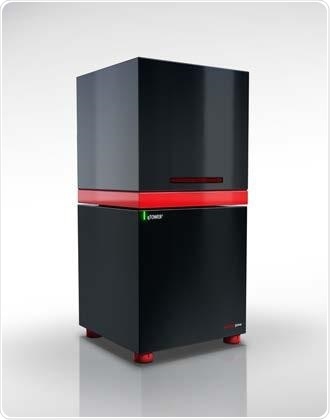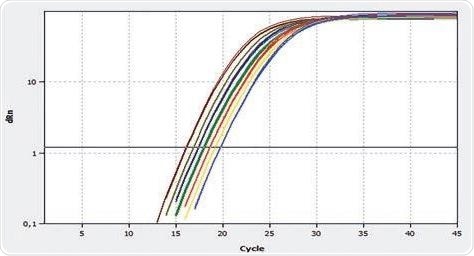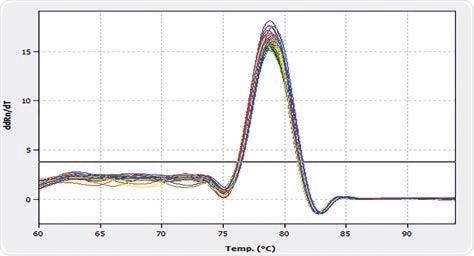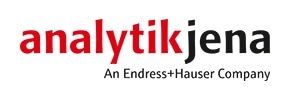Four key properties can characterize a valid, real-time PCR assay: PCR efficiency, reproducibility, specificity and sensitivity. A number of issues can have an effect on these crucial factors, including not only primer design, plastic ware and master mix, but also the performance of the real-time PCR cycler itself, which can have an impact on the results.

As a result of this, it is compulsory to guarantee best properties of the real-time PCR cycler to depend on the results of the applied real-time PCR.
One of the trickiest requirements is to distinguish between minor stages of dilution, even as low as 1:1.5, which verifies the reliability and accuracy of the performance of the real-time PCR cycler and thus, all of the data the instrument produces.
Materials and Methods
For this study, primers specific to 16S rRNA gene of E. coli were employed for amplification of a 120 bp fragment over seven dilution stages, with six replicates at 20 µl reaction volume for each concentration. The master mix employed was innuMIX qPCR SyGreen Sensitive by Analytik Jena.
The time-temperature-profile began with 2 minutes at 95 °C, followed by a further 45 cycles, with 5 seconds at 95 °C, 5 seconds at 58 °C and 15 seconds at 72 °C. It ended with a melting curve (60 – 95 °C, 15 seconds equilibration and 1 °C increment).
Instrumentation
Data was collected in color module 1 (470 nm/520 nm, gain = 5) of qTOWER³ G touch for SyGreen.
Results
The linear regression of the 1.5-fold dilution series resulted in a PCR efficiency of 97% (slope = -3.41) and R² = 0.998.

Figure 1. Amplification plot for 6-time 1.5-fold dilution of E. coli genomic DNA, amplified using primers specific for 16S rRNA gene. With automated threshold settings results are as follows for Ct (SD): 106 copies, dark red = 16.11 (0.04); 6,67·105 copies, light green = 16.83 (0.05); 4.44·105 copies, dark blue = 17.31 (0.04); 2.96·105 copies, green = 18.05 (0.03); 1.98·105 copies, red = 18.59 (0.03); 1.32·105 copies, yellow = 19.18 (0.03); 8.78·104, blue = 19.72 (0.03).

Figure 2. Melting peaks of the PCR amplicons result in a melting temperature of 78.80 °C with a SD of 0.13 °C.
Conclusion
The Analytik Jena qTOWER³ G touch has the capacity to identify and clearly distinguish between tiny variations in concentration. In the performed 1.5-fold dilution series, high precision discernment was proven in a reaction with a PCR efficiency of 97% and a R² of 0.998.
About Analytik Jena US
Analytik Jena is a provider of instruments and products in the areas of analytical measuring technology and life science. Its portfolio includes the most modern analytical technology and complete systems for bioanalytical applications in the life science area.
Comprehensive laboratory software management and information systems (LIMS), service offerings, as well as device-specific consumables and disposables, such as reagents or plastic articles, complete the Group’s extensive range of products.
About Life Science
The Life Science product area demonstrates the biotechnological competence of Analytik Jena AG. We provide a wide product spectrum for automated total, as well as individual solutions for molecular diagnostics. Our products are focused to offer you a quality and the reproducibility of your laboratory results.
This will surely ease your daily work and speed up your work processes in a certain way. All together we support you through the complete process of the lab work. Besides we offer customized solutions and are able to adapt our products to your needs. Automated high-throughput screening systems for the pharmaceutical sector are also part of this segment’s extensive portfolio.
About Analytical Instrumentation
Analytik Jena has a long tradition in developing high-performance precision analytical systems which dates back to the inventions made by Ernst Abbe and Carl Zeiss. We have grown to become one of the most innovative manufacturers of analytical measuring technology worldwide.
Our business unit Analytical Instrumentation offers excellent competencies in the fields of optical spectroscopy, sum parameters and elemental analysis. Being proud of our core competency we grant all our customers a long-term warranty of 10 years for our high-performance optics.
About Lab Automation
With more than 25 years of market experience, Analytik Jena with its CyBio® Product Line is a leading provider for high quality liquid handling and automation technologies. In the pharmaceutical and life science industries, our products enjoy the highest reputation for precision, reliability, robustness and simplicity.
Moreover, the Automation Team designs, produces and installs fully automated systems tailored to our clients' application, throughput and capacity requirements. From stand-alone CyBio® Well up to fully customized robotic systems we handle your compounds, biomolecules and cells with great care.
Sponsored Content Policy: News-Medical.net publishes articles and related content that may be derived from sources where we have existing commercial relationships, provided such content adds value to the core editorial ethos of News-Medical.Net which is to educate and inform site visitors interested in medical research, science, medical devices and treatments.